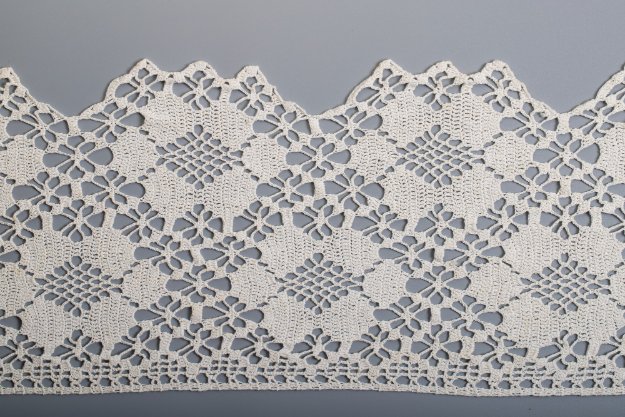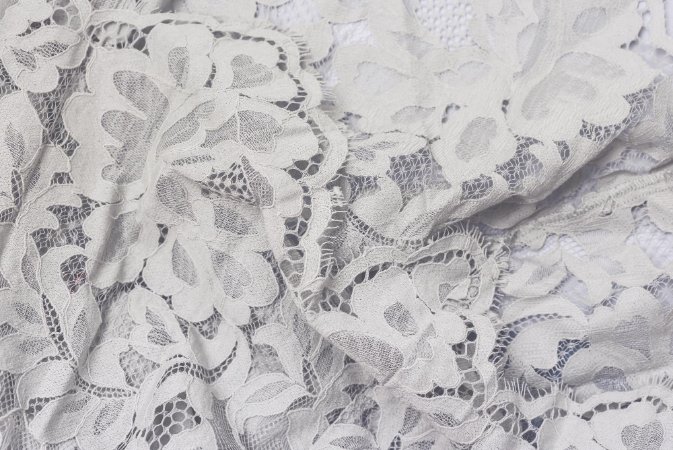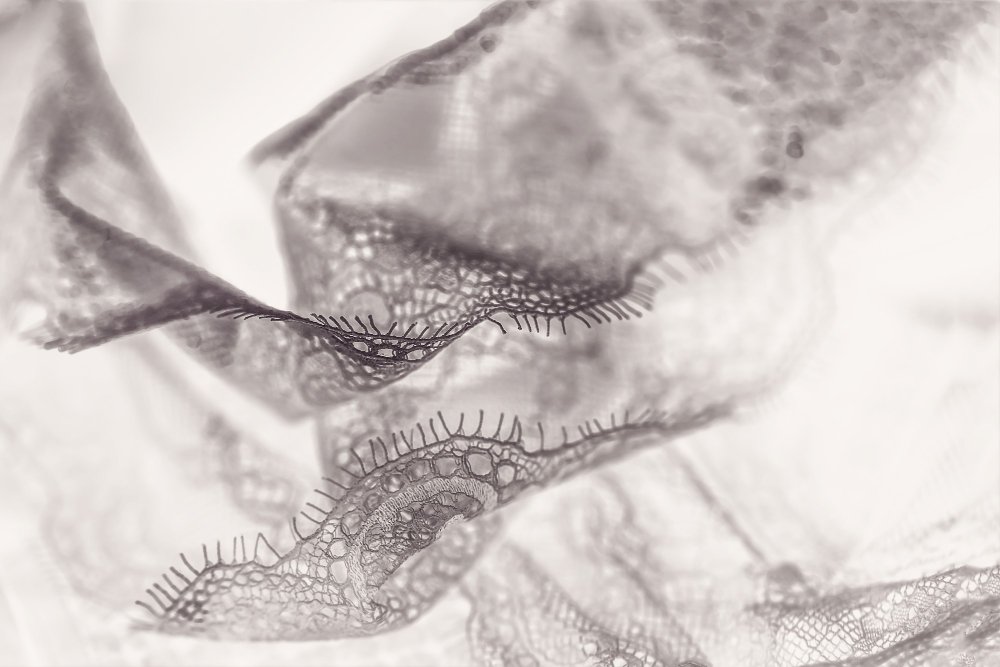Your complete guide to understanding this historic textile, from heritage craftsmanship to modern applications
Table of Contents
- What is Cluny Lace? Understanding the Basics
- What Does Cluny Lace Look Like?
- Rich Heritage: From 17th Century France to Today
- The Leavers Machine: Revolutionary Technology
- Key Characteristics and Identification
- Cluny vs Chantilly Lace: Key Differences
- Modern Applications in Fashion and Home Decor
- Sustainability and Environmental Impact
- Care and Maintenance Guide
- Current Market Trends and Sourcing
- Frequently Asked Questions
What is Cluny Lace? Understanding the Basics
Cluny lace represents one of the most distinctive and durable forms of lace fabric available today. Named after the French town near a medieval abbey, this cotton-based textile stands apart from other lace types through its geometric precision and substantial feel.
Unlike delicate alternatives such as Chantilly lace, Cluny lace features a heavier construction that makes it perfect for both decorative and functional applications. The fabric combines mathematical geometric patterns with organic floral motifs, creating a unique aesthetic that has captivated designers for centuries.
Key Characteristics at a Glance
- Made from 100% cotton for lasting durability
- Features distinctive geometric patterns with raised floral elements
- Heavier and more substantial than most other lace types
- Traditionally produced on specialized Leavers machines
- Suitable for both fashion and home decor applications
What Does Cluny Lace Look Like?
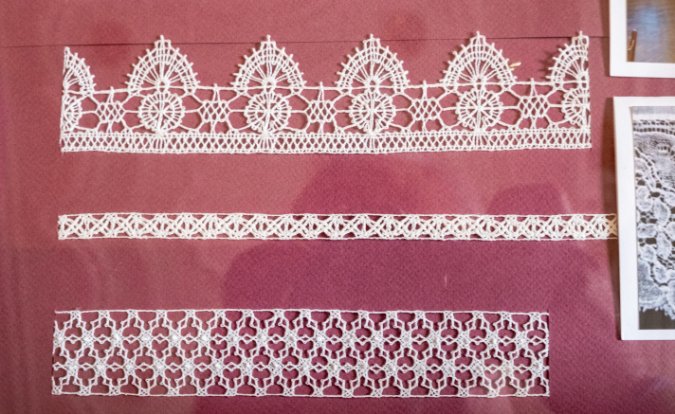
Classic Cluny lace showcasing the characteristic geometric cutouts with raised floral elements
Cluny lace has a very recognizable appearance that sets it apart from other lace varieties. The most striking feature is its combination of sharp geometric shapes surrounding softer, rounded floral elements.
Visual Elements That Define Cluny Lace
The fabric typically showcases hexagonal or diamond-shaped cutouts that frame botanical motifs like roses, leaves, and vines. These raised threads create a three-dimensional effect that catches light beautifully, while the tightly woven edges remain perfectly aligned without fraying even after decades of use.
The geometric precision comes from its bobbin lace construction, where multiple threads are twisted and braided according to predetermined patterns. This creates the characteristic “heavy” feel that distinguishes authentic Cluny from machine-made imitations.
Identifying Authentic Cluny Lace
Look for these telltale signs: consistent geometric patterns, raised thread work that creates texture, substantial weight despite the openwork design, and crisp edges that don’t fray. The cotton threads should have a natural sheen without appearing overly glossy.
Rich Heritage: From 17th Century France to Today
The story of Cluny lace begins in the heart of France’s Burgundy region, where local artisans near a medieval abbey began creating geometric patterns inspired by religious manuscripts and natural forms. What started as a regional craft eventually employed over 25,000 specialists across Europe by the 1890s.
Origins and Cultural Impact
During the 1600s, this intricate textile gained prominence in French courts, where its geometric designs complemented the formal aesthetics of the period. The craft thrived throughout the 18th and 19th centuries, with many artisans working from home workshops to meet growing international demand.
The industrial shifts of the 1970s nearly erased this centuries-old tradition, shrinking artisan numbers by 80%. Today, only a handful of workshops preserve these time-honored methods, balancing historical accuracy with contemporary design needs.
The Mason Family Legacy
The Mason family has been integral to Cluny lace production since the 1730s, starting as framework knitters and flax dressers before transitioning to lace making when machines first produced this fabric in the 1760s. Their commitment to preserving traditional techniques while embracing technological advances has kept this craft alive through multiple generations.
The Leavers Machine: Revolutionary Technology
Understanding Cluny lace requires knowledge of the remarkable Leavers machine, invented by John Levers in 1813 as an adaptation of Heathcoat’s Old Loughborough machine. This technological marvel revolutionized lace production while maintaining the quality and complexity of handmade work.
Watch the fascinating process of traditional Leavers lace production at one of the world’s last remaining factories
Design Creation
Patterns are drawn six times life size and converted to Jacquard code
Thread Preparation
Up to 50,000 threads are prepared in four different types
Machine Setup
Jacquard cards control the 17-ton machine with 40,000 moving parts
Production
Complex weaving process creates the distinctive geometric patterns
Technical Specifications
A typical 120-inch Leavers machine weighs 17 tons and contains approximately 40,000 moving parts. The process involves up to 32 distinct steps from initial artwork to finished product, requiring highly skilled operators known as “twist-hands” who undergo years of training.
The machines use between 12,000 and 50,000 threads simultaneously, with Jacquard apparatus controlling the pattern through punched cards. This technology, which inspired early computer programming concepts, allows for incredibly complex designs that would be impossible to achieve by hand.
Key Characteristics and Identification
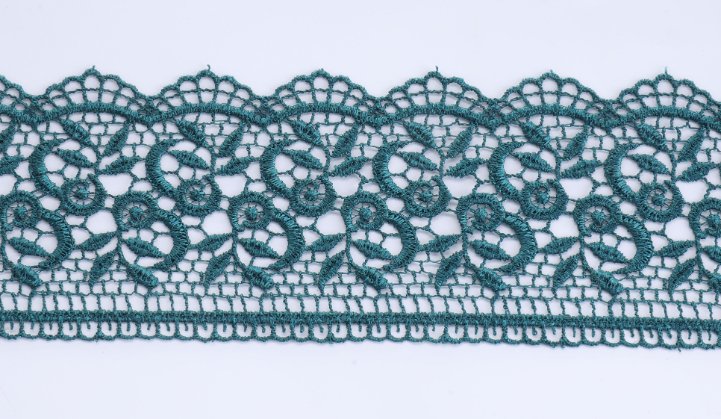
Close examination reveals the tight weave and raised threadwork that indicates authentic Cluny lace
Authentic Cluny lace displays several distinctive features that help identify quality pieces and distinguish them from mass-produced alternatives or other cotton lace varieties.
Material and Construction
True Cluny lace uses only natural cotton fibers, specifically long-staple cotton that achieves the required density and natural sheen. High thread counts prevent stretching while maintaining breathability, a critical feature for both garments and home textiles.
The raised threads that create the dimensional floral motifs result from specialized weaving techniques passed down through generations. These create shadows and highlights that change with lighting conditions, giving the fabric its distinctive appearance.
Pattern Recognition
Geometric precision marks authentic Cluny lace. Sharp hexagonal outlines often frame rounded floral elements, creating contrasting textures within a single design. This balance distinguishes it from purely abstract or completely naturalistic patterns found in other lace types.
Quality Indicators
Superior pieces showcase tightly woven fibers, consistent stitching, and crisp motifs. Thread density of 40+ threads per inch indicates premium quality, while items from the remaining authentic factories hold special collector status.
Cluny vs Chantilly Lace: Key Differences
Understanding the differences between Cluny and Chantilly lace helps in making informed choices for specific projects. While both originate from French traditions, they serve different aesthetic and functional purposes.
| Aspect | Cluny Lace | Chantilly Lace |
|---|---|---|
| Weight | Heavy and substantial | Light and delicate |
| Pattern Style | Geometric with floral accents | Flowing floral patterns |
| Primary Material | Cotton | Silk or fine cotton |
| Construction | Bobbin lace (guipure type) | Bobbin lace with fine ground |
| Best Applications | Home decor, sturdy garments | Bridal wear, evening gowns |
| Durability | Very durable, everyday use | Delicate, special occasions |
When to Choose Each Type
Select Cluny lace for projects requiring durability and structural integrity, such as applique work, table linens, or garments that need to maintain their shape. Choose Chantilly for formal wear, overlays, or when you want an ethereal, romantic appearance.
Modern Applications in Fashion and Home Decor
Cluny lace’s versatility extends far beyond traditional uses, making it relevant for contemporary designers and home decorators seeking to add texture and historical depth to their projects.
Fashion Applications
Modern fashion designers appreciate Cluny lace for its ability to add structure without stiffness. The fabric works beautifully in:
- Structured garments: Jackets, blazers, and tailored pieces benefit from the fabric’s ability to hold shape
- Casual wear: Stretch lace combinations create comfortable yet elegant everyday pieces
- Layering pieces: Vests, cardigans, and light jackets gain visual interest
- Trim and accents: Borders, cuffs, and decorative panels add sophistication
Home Decor Excellence
Interior designers value Cluny lace for its ability to soften hard surfaces while maintaining architectural structure:
Popular Home Applications
- Window treatments: Panels that filter light while maintaining privacy
- Table linens: Runners, placemats, and overlays for special occasions
- Furniture protection: Antimacassars and chair arm covers that combine function with beauty
- Wall hangings: Framed pieces that serve as textile art
DIY Project Ideas
Crafters find Cluny lace particularly rewarding to work with because its tight weave prevents fraying when cut. Popular projects include:
- Updating plain curtains with border trims
- Creating heirloom table runners
- Adding elegant touches to handmade garments
- Crafting decorative pillow accents
Sustainability and Environmental Impact
As the fashion industry grapples with environmental concerns, traditional textiles like Cluny lace offer both challenges and opportunities for sustainable practices.
Environmental Benefits
Cluny lace’s cotton construction and durability align well with sustainable fashion principles. Unlike synthetic alternatives, cotton lace biodegrades naturally and doesn’t contribute to microplastic pollution. The fabric’s longevity means pieces can last generations when properly cared for, reducing replacement needs.
Modern Sustainable Innovations
Forward-thinking manufacturers are developing eco-friendly versions using:
- Organic cotton: Grown without harmful pesticides or chemicals
- Recycled fibers: Some companies now offer lace made from recycled cotton waste
- Natural dyes: Plant-based coloring agents replace synthetic chemicals
- Water-efficient production: New techniques reduce water consumption by up to 50%
Circular Fashion Potential
Vintage Cluny lace pieces often retain their beauty and structural integrity for decades, making them perfect candidates for upcycling projects. Many slow fashion advocates recommend investing in quality lace pieces that can be repurposed multiple times throughout their lifecycle.
Care and Maintenance Guide
Proper care ensures your Cluny lace pieces maintain their beauty and structural integrity for years to come. Following these guidelines protects your investment while preserving the craftsmanship.
Cleaning Best Practices
Always hand wash Cluny lace using cold water and mild detergent. Never twist or wring the material, as this can distort the geometric patterns and damage the raised threads. Instead, gently press out excess moisture between clean towels.
Pre-Treatment
Check for stains and test any cleaning products on an inconspicuous area
Gentle Washing
Use cool water and mild detergent, swish gently without agitation
Careful Drying
Lay flat on clean towels away from direct sunlight
Proper Storage
Fold with acid-free tissue or hang in breathable garment bags
Storage Solutions
Store folded items with acid-free tissue between layers to prevent creasing and discoloration. Choose cool, dry spaces away from attics or basements where temperature and humidity fluctuations can damage natural fibers.
Repair Techniques
Minor repairs require sharp scissors and matching thread. Secure frayed edges with tiny whip stitches, working from the backside to maintain the fabric’s appearance. For significant damage, consult professionals who understand the unique construction of guipure-style laces.
Professional Care Considerations
For valuable vintage pieces or items with complex staining, seek specialists who work with delicate textiles. Many dry cleaners lack experience with heritage laces and may use inappropriate chemicals or techniques.
Current Market Trends and Sourcing
The Cluny lace market faces significant changes as traditional manufacturers adapt to modern challenges while preserving heritage techniques.
Industry Challenges
Recent developments have dramatically affected the availability of authentic Cluny lace. The historic Cluny Lace Company, which has operated for over 250 years and supplied luxury designers including Burberry and Dior, faces production challenges that impact global supply chains.
These machines, most over 100 years old, require constant maintenance with hand-fabricated replacement parts since original manufacturing ceased in the early 1960s. The specialized knowledge needed to operate and maintain this equipment represents irreplaceable cultural heritage.
Pricing and Value
Contemporary yardage typically costs $4-$6.50, while vintage finds often exceed $100 due to rarity and craftsmanship. Luxury collaborations with fashion houses can quadruple prices overnight, reflecting both material costs and cultural significance.
| Source Type | Price Range | Quality Level | Availability |
|---|---|---|---|
| Authentic Factory Pieces | $15-30/yard | Highest | Very Limited |
| Vintage/Antique | $100-500+ | Variable | Rare |
| Contemporary Production | $4-6.50/yard | Good | Limited |
| Machine Reproductions | $2-4/yard | Basic | Wide |
Sourcing Strategies
Budget-conscious creators should monitor specialty retailers for overstock events, which occasionally drop prices to $2.25 per yard. Online platforms now provide access to rare archival pieces previously available only through European auctions.
When sourcing, verify factory certifications to avoid costly mistakes. Look for documentation of Leavers machine production and authentic cotton content, as these factors significantly impact both quality and value.
Frequently Asked Questions
Cluny lace stands out through its distinctive geometric motifs combined with floral designs, heavier cotton construction, and superior durability. Unlike delicate laces like Chantilly, Cluny lace can withstand regular use while maintaining its crisp geometric patterns and raised dimensional elements.
Look for tightly woven cotton fibers with consistent geometric patterns, raised thread work creating dimensional texture, and crisp edges that don’t fray. Authentic pieces have a substantial weight despite openwork designs, and thread density of 40+ threads per inch indicates premium quality. Factory documentation helps verify genuine Leavers machine production.
Cluny lace’s durable cotton construction makes it excellent for everyday wear. Unlike fragile silk laces, it can handle regular washing and wearing while maintaining its structure. It’s particularly good for structured garments, casual layering pieces, and home decor items that need to withstand regular use.
Cluny lace is heavier and more geometric, made from cotton with bold patterns, while Chantilly lace is lighter and more delicate with flowing floral designs, typically made from silk. Cluny works better for structural applications and everyday use, while Chantilly is preferred for formal wear and special occasions.
Hand washing is always safest for Cluny lace to preserve the geometric patterns and raised threadwork. If you must machine wash, use a delicate cycle with cold water, place items in mesh bags, and avoid spin cycles. However, for valuable vintage pieces, stick to hand washing with mild detergent.
With recent industry challenges affecting traditional manufacturers, authentic Cluny lace is increasingly rare. Check specialty textile retailers, vintage fabric dealers, and online platforms for archival pieces. The remaining traditional producers offer the highest quality, though at premium prices ($15-30 per yard).
Traditional Cluny lace made from natural cotton is more sustainable than synthetic alternatives. It biodegrades naturally, doesn’t shed microplastics, and its durability means pieces last generations. Some manufacturers now offer organic cotton versions and use water-efficient production methods for even better environmental impact.
Start with simple projects like table runners, pillow trims, or curtain borders. Cluny lace’s tight weave prevents fraying when cut, making it forgiving for beginners. Consider basic sewing supplies and practice on small samples before tackling larger pieces.
Conclusion
Cluny lace represents more than just a textile—it embodies centuries of craftsmanship, innovation, and cultural heritage. As we’ve explored throughout this guide, this remarkable fabric continues to bridge past and present, offering both historical significance and contemporary relevance.
Key Takeaways for Modern Users
The geometric precision and cotton durability that made Cluny lace popular in the 17th century remain its greatest strengths today. Whether you’re a fashion designer seeking structured elegance, a home decorator adding textural interest, or a craft enthusiast exploring traditional techniques, Cluny lace offers unmatched versatility.
The current industry challenges, particularly affecting traditional manufacturers like the historic Cluny Lace Company, make authentic pieces increasingly valuable. This scarcity emphasizes the importance of proper care and appreciation for existing pieces while supporting the few remaining artisans who preserve these traditional methods.
Sustainable Choices for the Future
As sustainable fashion gains momentum, Cluny lace’s natural cotton construction and exceptional durability position it as an environmentally conscious choice. Unlike fast fashion alternatives, quality Cluny lace pieces can serve multiple generations, supporting the slow fashion movement through longevity and timeless appeal.
The emergence of organic cotton variants and water-efficient production methods shows how traditional crafts can adapt to modern environmental concerns without compromising quality or heritage value.
Practical Recommendations
For Buyers:
- Invest in authentic pieces from verified sources when possible
- Consider vintage options for unique patterns and proven durability
- Verify cotton content and Leavers machine production for quality assurance
- Budget for proper care and occasional professional maintenance
For Crafters and Designers:
- Start with small projects to understand the fabric’s behavior
- Use proper sewing machine feet designed for delicate fabrics
- Plan patterns to showcase the geometric designs effectively
- Consider combining with other natural fabrics for complementary textures
For Collectors and Preservationists:
- Document provenance and historical details of vintage pieces
- Store properly with acid-free materials in stable environments
- Support remaining traditional manufacturers when possible
- Share knowledge and techniques with younger generations
Looking Forward
The future of Cluny lace depends on balancing preservation with innovation. While traditional Leavers machines and heritage techniques remain irreplaceable, new approaches to sustainable production and modern applications ensure this historic textile remains relevant for contemporary users.
Understanding the difference between authentic heritage pieces and modern reproductions helps consumers make informed decisions while supporting both preservation efforts and contemporary craftsmanship. Whether you choose vintage treasures or newly produced pieces, each Cluny lace item connects you to a rich tradition of textile artistry.
As you explore the world of Cluny lace, remember that you’re not just selecting a fabric—you’re participating in the preservation of cultural heritage while creating new stories for future generations to discover and appreciate.
Ready to Start Your Cluny Lace Journey?
Begin with a small project that showcases the fabric’s unique characteristics. Whether it’s a table runner highlighting geometric patterns or a garment accent that adds textural interest, your first Cluny lace piece will help you understand why this remarkable textile has captivated creators for over 400 years.

